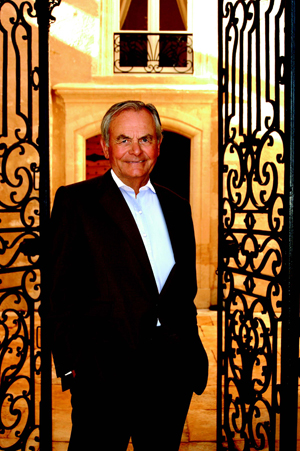Over the last thirty years, I have had the opportunity to purchase six châteaux, some of them listed as historic monuments and all of them located within a large listed vineyard in the Bordeaux region. It would have made good business sense for me to focus on the quality of the terroir, the condition of the vines and the wine-making equipment in each vineyard. However what very often, perhaps too often, captured my attention was the château nestling amidst the vines. Who can fail to be moved by the Château La Tour Carnet and its Médoc grand cru? Its tower, constructed in 1112, the entire building surrounded by wide moats whose water has been replenished over the centuries by a nearby stream, its drawbridge, its many varieties of cypress tree enhancing the surrounding beauty and its two storeys with their huge hearths and mediaeval-style rooms. And in addition to all this, the château was built and extended by Count Jean de Foix in the 13th century and later became the property of the great French philosopher Michel de Montaigne. The depth and elegance of its wines are like a dream come true, but I truly believe that this is due at least in part to the château itself. However irrational this may seem, it is my personal feeling. Next is the Château Pape Clément with its Grand Cru Classé de Graves, whose first grape harvest was in 1252. It was owned by Pope Clement V from 1309 to 1314, having belonged to his family for almost a century. The soil is considered to be exceptional, as are the cellars under the château, where the treasures of the vine are left to age. Clement V and King Philip IV joined forces to try and eradicate the Knights Templar and although I obviously do not condone this or consider them to be heroes, the fact remains that these events left their mark on history. In addition, in 1999 I purchased the Château Fombrauge cru classé in Saint-Émilion, with its 15th century Bordeaux-style charterhouse which is enhanced to dramatic effect by the late autumnal sun. The presence of the Canolle family can still be felt; they owned the property in 1466 and, as ardent royalists, did not survive the massacres of the Revolution. I live my day-to-day life amidst these wonderful stories that have made their way down through the centuries. Although I love their great wines I freely admit that I am often just as moved by their history.

:strip_icc()/https%3A%2F%2Fproperties.lefigaro.com%2Fimages%2FPDF%2FCMS%2Feditions%2F70227110-1436461398.26.jpg)
